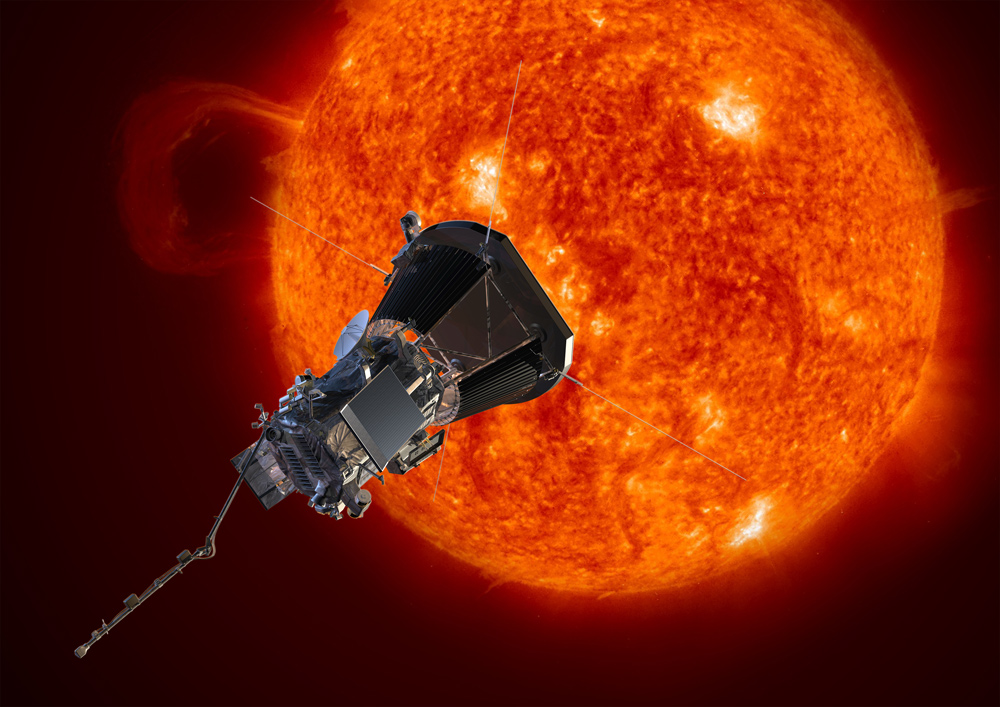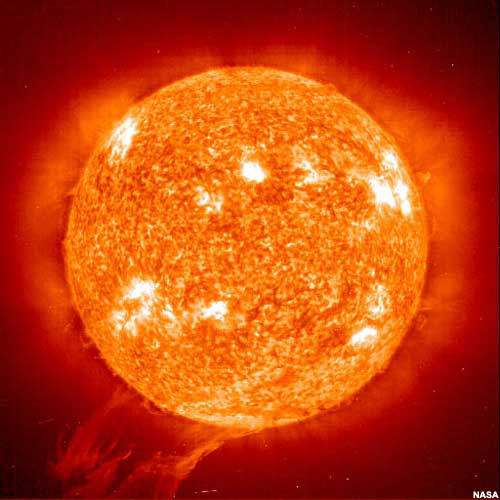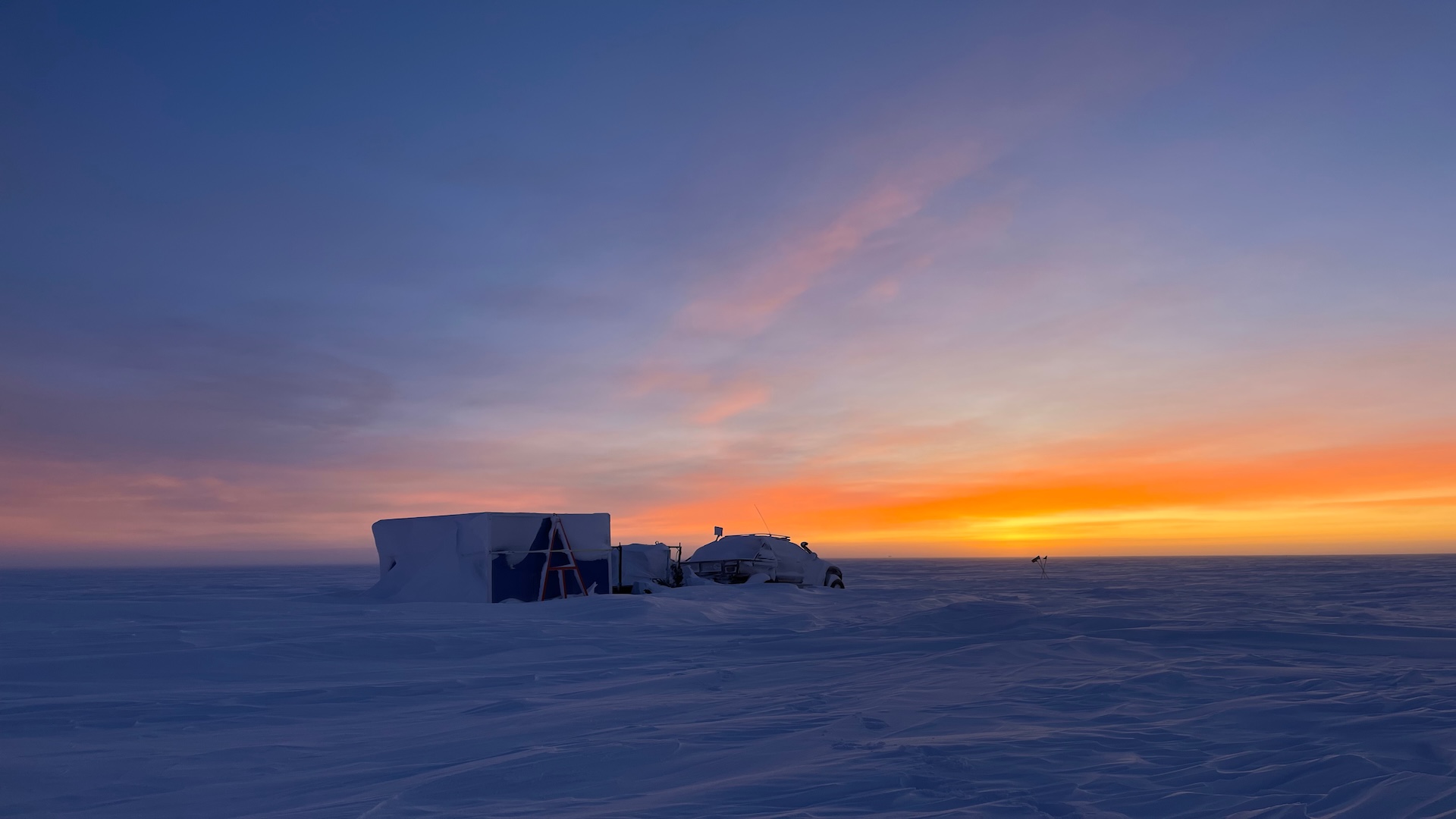Don't call it Solar Probe Plus anymore.
NASA's upcoming sun-studying mission, which will come much closer to Earth's star than any spacecraft in history, has been renamed the Parker Solar Probe, agency officials announced today (May 31).
The new moniker honors pioneering University of Chicago astrophysicist Eugene Parker, who predicted the existence of the solar wind — the stream of charged particles flowing constantly from the sun — back in 1958. [Solar Quiz: How Well Do You Know Our Sun?]
NASA has named about 20 space missions after people; the Hubble Space Telescope is perhaps the most famous example. But the 89-year-old Parker is the first researcher to be celebrated in this manner while still alive, agency officials said.
"I'm certainly greatly honored to be associated with such a heroic scientific space mission," Parker said during a press conference at the University of Chicago today.
The ambitious $1.5 billion Parker Solar Probe mission is scheduled to soar to solar orbit atop a United Launch Alliance Delta IV Heavy rocket from Kennedy Space Center in Florida on July 31, 2018.
Over the course of the next seven years, the spacecraft will perform 24 close flybys of the sun, some of which will bring it within just 3.9 million miles (6.2 million kilometers) of the solar surface. That's well inside the orbit of Mercury, and seven times closer than any other probe has ever gotten to the sun, NASA officials said.
Get the world’s most fascinating discoveries delivered straight to your inbox.
The environment in this region is extreme, to say the least: During its closest encounters, the 10-foot-long (3 meters) Parker Solar Probe is expected to experience temperatures of up to 2,500 degrees Fahrenheit (1,370 degrees Celsius) and solar radiation intensities 475 times greater than we're used to on Earth.
Mission controllers will therefore retract the Parker Solar Probe's solar arrays as it approaches the sun and extend them as the spacecraft retreats, to keep panel power levels and temperatures from fluctuating too much. And the probe will be outfitted with a 7.5-foot-wide (2.3 m), 4.5-inch-thick (11.4 centimeters) heat shield made of advanced carbon-composite material, which will allow its four science instruments to operate at about room temperature, NASA officials said.
The Parker Solar Probe will perform a number of tasks with this science gear, such as measure the sun's electric and magnetic fields, photograph solar structure and study the solar wind.
Many of us take the sun for granted, giving it little thought until it scorches our skin or gets in our eyes. But our star is a fascinating and complex object, a gigantic fusion reactor that gives us life. How much do you know about the sun?
Solar Showdown: How Well Do You Know Our Sun?
If all goes according to plan, the Parker Solar Probe's observations will help mission scientists solve two long-standing puzzles: How is the solar wind accelerated, and why is the sun's outer atmosphere, known as the corona, so much hotter than the solar surface (3 million degrees F, or 1.7 million degrees C, compared with 10,000 degrees F, or 5,500 degrees C)?
This latter situation is akin to water flowing uphill, said Parker Solar Probe mission scientist Nicola Fox, of the Johns Hopkins University Applied Physics Laboratory (APL) in Laurel, Maryland: "It shouldn't happen."
These two big questions can be answered only by getting up-close observations of the sun, Fox added. And the answers are not just of academic interest.
"One recent study by the National Academy of Sciences estimated that, without advance warning, a huge solar event could cause $2 trillion in damage in the U.S. alone, and the Eastern Seaboard of the U.S. could be without power for a year," researchers at APL, which manages the mission for NASA, wrote in an online description.
"In order to unlock the mysteries of the corona, but also to protect a society that is increasingly dependent on technology from the threats of space weather, we will send [the Parker Solar Probe] to touch the sun," they added.
The Parker Solar Probe will carry a chip loaded with photographs of Eugene Parker and a copy of his seminal 1958 solar-wind paper, Fox said. NASA has also invited Parker to come up with an inscription for a plate that will be installed on the spacecraft, she added.
Follow Mike Wall on Twitter @michaeldwall and Google+. Follow us @Spacedotcom, Facebook or Google+. Originally published on Space.com.






